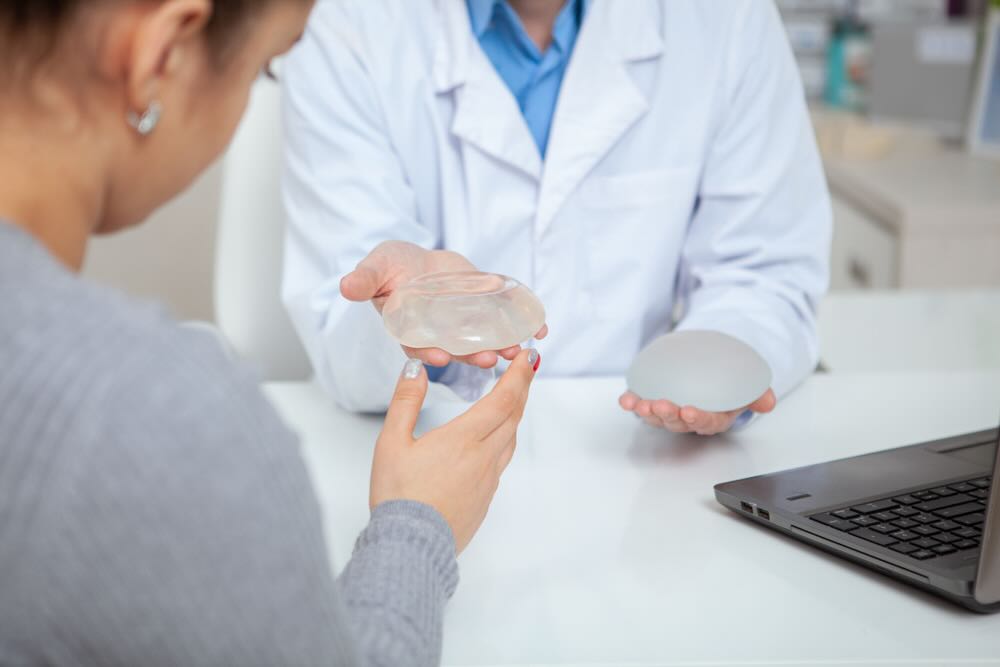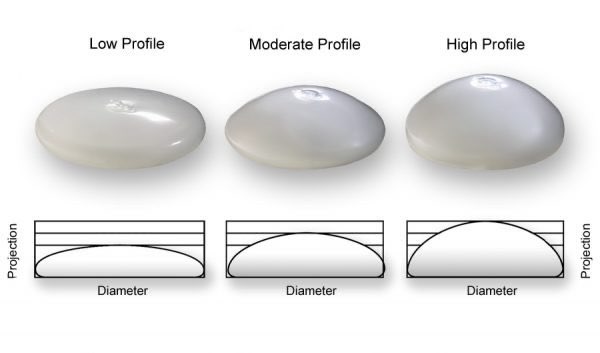
A good breast augmentation outcome hinges on meticulous calculations and precise choices. When it comes to this type of breast surgery, selecting the right implant isn’t just about size; it’s a complex equation involving multiple variables. From cubic centimeters (cc’s) to implant profiles and individual anatomical characteristics, every factor plays a crucial role in achieving the desired aesthetic outcome. Most patients have an idea of the result they’re looking to achieve with breast augmentation, but the path to getting there may be significantly different from patient-to-patient. Selecting the appropriate implant depends on a range of factors such as chest width, breast width, skin laxity and thickness, and desired outcome.1
Critical Anatomical Measurements
Individual anatomical characteristics of chest and breast width are perhaps the most critical in guiding implant selection.2 A narrow chest width may necessitate lower volume higher-profile implants to achieve a fuller and rounder result, while a wider chest may accommodate larger volume low-profile implants more harmoniously for the same result. Similarly, breast width dictates the base diameter of the implant, ensuring a proportionate and balanced appearance.
Understanding the dimensions of both your breasts and chest is critical to determining the right breast implant size and involves precise measurements. The pivotal dimension in this process is the width of your breasts, measured in centimeters from the cleavage area to the outermost part of your breast, adjacent to your arm. This measurement is taken in a straight line, without following the curve of your breast. Typically, most women’s breasts measure between 11 to 14 cm in width.
Understanding your breast width provides valuable insight into selecting the most suitable breast implants for you. Opting for an implant that closely matches or is slightly narrower than your breast width typically yields optimal results.3 For instance, if your breasts each measure 12 cm in width, opting for an implant with a diameter ranging from 11 to 12 cm generally ensures a well-fitted outcome. Once you know your breast width, then you can work with your surgeon to choose your breast implant profile.

Implants are available in various profiles, ranging from low to high. The profile determines how far the implant projects from the chest wall. For instance, a high-profile implant offers more projection, making it suitable for individuals looking for enhanced cleavage or a fuller upper pole. Conversely, a low-profile implant provides a subtler, more natural-looking result. Higher-profile implants tend to be more narrow at their base, while lower-profile implants are wider.
Once the ideal diameter of a breast implant is determined, your surgeon can explain how the various breast implant profiles may affect the breast volume and ultimately, the final result. The volume increase of cc’s, or cubic centimeters, of a breast implant are directly related to the diameter and profile of any particular breast implant. Using the same breast width measurement of about 12 cm, a low profile breast implant would have approximately 275 cc’s of volume and project about 3.3 cm from the chest wall while a moderate profile breast implant would have 320 cc’s and project 3.9 cm, and a high profile implant would have 500 cc’s and project 5.7 cm from the chest wall.
The thickness of your breast tissues is another crucial factor to contemplate during breast augmentation. Thicker breast tissues may accommodate wider implants compared to thinner breast tissues. This variance is crucial as it influences how the implant interacts with and stretches the breast tissues and skin, particularly over time. In individuals with thin breast tissues, opting for narrower implants is advisable to prevent excessive stretching and thinning of tissues, which could lead to visible implant ripples. Returning to the example of a 12-cm wide breast, if the breast tissues are thin, selecting an implant with a diameter ranging from approximately 10.5 to 11.5 cm would be more suitable.
Implant Cohesivity
Beyond profile and volume considerations, tailoring the gel cohesivity of breast implants to meet the individual needs of patients involves careful consideration of anatomical factors, soft-tissue characteristics, and patient preferences. This customization is vital for achieving optimal aesthetic outcomes and ensuring patient satisfaction. Gel cohesivity plays a significant role in determining the feel and shape of the breast, directly influencing the distribution of volume within the breast.
Lower cohesivity implants are typically recommended for patients seeking a tapered upper pole or a natural appearance, often referred to as an “anatomic shape.” Additionally, these implants are suitable for individuals with a high body mass index (BMI) or a substantial amount of native breast tissue. Medium-cohesivity implants are widely utilized and are particularly appropriate for patients with ptosis (sagging breasts) or those undergoing augmentation mastopexy. They are also suitable for patients with a tight skin envelope and those desiring upper pole fullness.
On the other hand, high-cohesivity implants are favored by patients aiming for a round breast shape. They are also recommended for individuals with constricted lower poles or those with a loose envelope postpartum. Furthermore, high-cohesivity implants are suitable for patients with thin, soft tissue envelopes or fibrous breast tissue. Tighter skin may benefit from smaller implants to prevent excessive stretching, while sagging skin might necessitate an implant with a higher level of cohesivity—more form stable—for optimal upper pole projection.4
Communication Is Key
Beyond the numbers and measurements, it’s essential to consider the patient’s aesthetic goals and preferences. Communication between the patient and surgeon is paramount in understanding desired outcomes and setting realistic expectations. A skilled surgeon will take into account not only the physical attributes but also the patient’s lifestyle, personality, and overall aesthetic sensibilities.
For example, a thin patient without much natural breast tissue may desire silicone implants placed under the pectoralis major muscle to avoid the appearance of implant rippling. However, if that same patient is active and engages in physical activities like yoga or weight lifting that cause the pectoralis muscle to flex, the subpectoral placement can result in animation deformity—causing the breasts to distort unnaturally.5
In essence, choosing the best implant for your aesthetic goals is akin to solving a multifaceted equation. Each variable—cc’s, implant profile, individual anatomical characteristics and lifestyle—interacts with the others to yield a customized solution tailored to the unique needs of the patient. It’s not a one-size-fits-all approach but rather a nuanced process that demands precision, expertise, and an artistic eye.
Learn More About Choosing Breast Implants
Ultimately, the goal of breast augmentation isn’t just to change the size or shape of the breasts but to enhance confidence and self-image. By carefully considering the math behind implant selection and factoring in the patient’s goals and anatomy, Dr. David Cangello helps his patients achieve beautiful, natural-looking results that align with their aesthetic aspirations. It’s a formula for success that combines science with artistry, transforming dreams into reality, one calculation at a time. To learn more about breast augmentation with Dr. Cangello, please contact us today.
1Gland Surgery. Implant selection in the setting of prepectoral breast reconstruction. Available: https://www.ncbi.nlm.nih.gov/pmc/articles/PMC6378253/. Accessed April 24, 2024.
2Chinese Medical Journal. Application of “CD–4” Theory for Determining the Width of Implant in Breast Augmentation. Available: https://www.ncbi.nlm.nih.gov/pmc/articles/PMC4836252/. Accessed April 24, 2024.
3StatPearls. Breast Ptosis. Available: https://www.ncbi.nlm.nih.gov/books/NBK567792/. Accessed April 24, 2024.
4Aesthetic Surgery Journal. Gel Cohesivity and Breast Augmentation: Applications to Clinical Practice. Available: https://www.ncbi.nlm.nih.gov/pmc/articles/PMC9778838/. Accessed April 24, 2024. BreastCancer.org. Breast Implant Animation
5Deformity. https://www.breastcancer.org/treatment/surgery/breast-reconstruction/corrective-reconstruction/dynamic-distortion. Accessed April 23, 2024.
